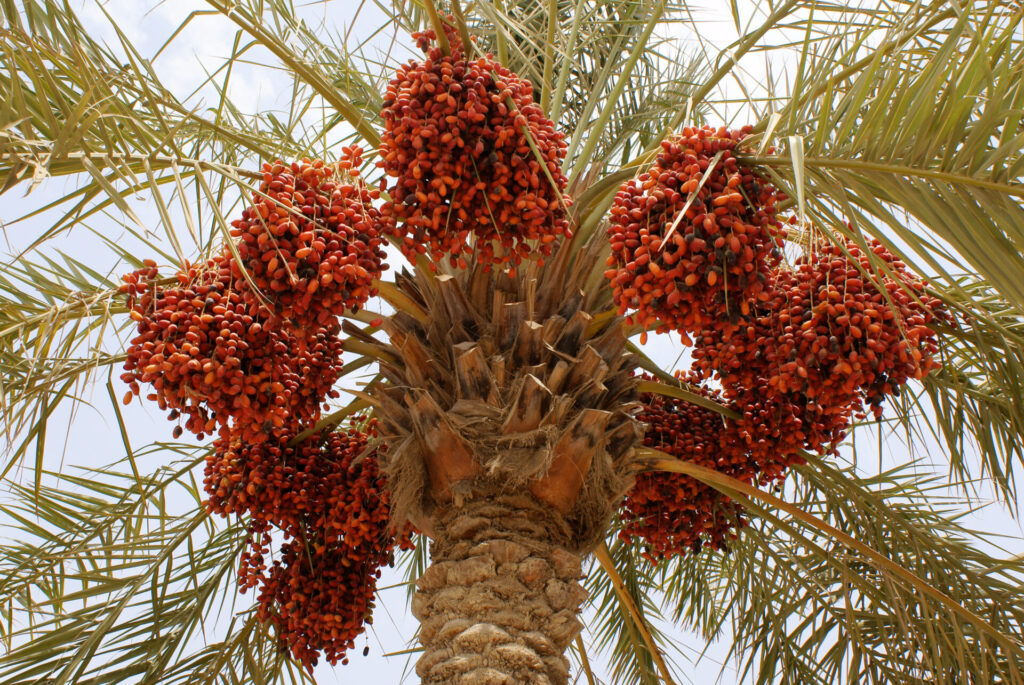Palms are flowering evergreen plants. They are angiosperms that belong to the
Arecaceae family. The date palm has a commanding presence. It has regal fronds, a thick
trunk, and large bunches of sweet fruit, making it a stately addition to your garden. The
date palm can grow up to 80 feet high and 40 feet wide, bearing large, sprawling, green
fronds at its peak. Late winter to early spring when flowering, this tree produces bunches
of pale yellow flowers that turn into its famous clusters of dates. Palm trees grow from the
top. New growth occurs on the top, with the oldest leaves at the bottom. This happens since the
minerals and nutrients travel upwards from the old leaves.
Though slow-growing, these palms give large rewards to those who are patient and
diligent in caring for them. Pollination takes place at 95 degrees (35 C.) and fruits need dry, hot
temperatures with warm nights. Date palm trees can live for 100 years. Some spread out
adventitious surface roots that anchor the plant and help it gather surface water. Take care when
planting date palms to choose a location with plenty of space both vertically and horizontally. Most
date palm production in is in southern California and Arizona. Florida has many palm trees too, but
the dates grow during the rainy season and generally get moldy and rot before they can mature is
why Florida’s humidity can be a struggle for the fruit. More recently, gardeners are growing date
palms in Southern Nevada, Louisiana, and Texas.






